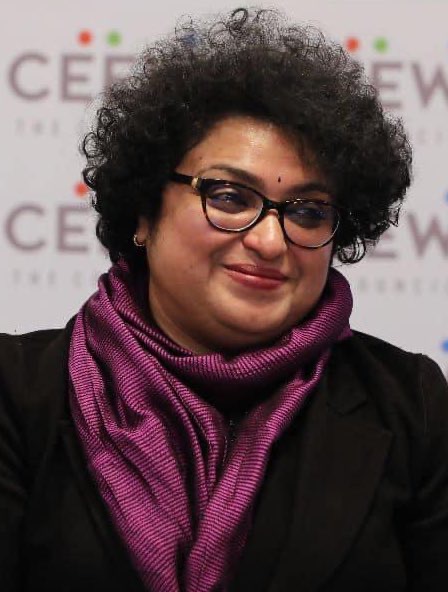While pragmatic, its fiscal marksmanship is a pressing concern.
Policy uncertainty can cause a severe drag on economic growth. The maiden budget by finance minister Nirmala Sitharaman was a judicious narrative of how to lessen the policy uncertainties. She has not deviated from the fiscal consolidation path and presented the budget from a position of strength.
It was a budget of a government re-elected back to power with full mandate.
The budget was presented from a positive backdrop; that India is an economy with the fastest growth rate in the world. However, one feels a disconnect between budget proposals and the budgetary allocations marked for each of these proposals.
This significant deviation – technically referred to as “fiscal marksmanship” – between what is proposed and what is budgeted for it is a pressing concern. The fiscal marksmanship requires a detailed analysis examining the demand for grants sector-wise.
But a quick look tells us that that certain budget proposals, like doubling farmer income, requires the sector to grow at 14%. Yet another instance is whether the promises regarding Ayushman Bharat are actually backed up by adequate allocations in the budget or if it is based on a ‘cooperative federalism’ model where state governments have to figure out the financing requirements of the scheme.
Attracting foreign capital
Infrastructure investment and foreign capital are two components that have been given emphasis in the budget to revive economic growth. However, triggering private corporate investment can never be confined to just reducing interest rates. Though the monetary policy committee has reduced the policy rates, the transmission of it to the economy may take time.
Foreign capital has two components – Foreign Direct Investment (FDI) and Foreign Institutional Investment (FII) including the portfolio investment. The transition of emphasis from FII to FDI is a welcome trend as “hot money” content of portfolio foreign investment can become “flighty capital” responding to the differentials in the rate of interest. If US Fed Reserve increases interest rates, such “hot money components” of foreign capital can always be unstable.
Raising the cap of FDI in certain sectors also needs to be judicious. Such deliberations have begun in the Indian economy with Arvind Mayaram’s report on rising the caps of FDI in certain sectors. The massive FDI proposed in the aviation sector and the media in the present budget is something which we need to wait and watch.
Within aviation, FDI should not be just confined to “airlines”. Aviation is not “airlines” per se, it also means the aviation infrastructure and avionics and related technology where there can be scope for foreign direct investment.
The maiden budget of Sitharaman had a dual-fold objective.
One, how to carve a roadmap towards achieving a “5 trillion-dollar economy” at the end of the next five years. And two, how to ensure the “last mile connectivity/delivery” to people.
The former is against the backdrop of a ten-point strategy which includes, among other things, the need to strengthen social and physical infrastructure, reduce the rural urban digital divide, Make in India, a new industrial policy, blue economy frameworks, enhancing the nutrition for women and children, Ayushman Bharat and “less government and maximum governance”.
For the latter, the government has strengthened their budget commitments in programmes like Ujjwala (gender budgeting in energy sector by providing clean fuel to women in low income households) and UDAY (aimed to make a turnaround in DISCOMS by improving the financial and operational efficiency to ensure 100% electrification for households).
On the taxation front, reducing the corporate tax to 25% for the firms that earn upto Rs 400 crore in revenue, is welcome, especially when India has one of the highest corporate taxation rates in the world. This high tax rates can affect the competitiveness of Indian firms. Two, the incidence of business taxation analysis reveals that the firms whose turnover upto Rs 400 crore has higher effective tax rate than the firms above Rs 400 crore. Yet another point is that only less than one per cent corporate firms belong to “above Rs 400 crore turnover” category.
When Sitharaman was the member of National Commission for Women, she had deliberations with NIPFP, which has done pioneering research in gender budgeting, and she has believed that gender budgeting is a promising framework to ensure gender equality. In the present budget, she has scaled it up to “second generation reforms” on gender budgeting by announcing that an expert group committee will be constituted to evaluate the last 15 years of gender budgeting to deepen the analysis of examining the budget through a “gender lens”.
With this announcement, an emphasis to “Leave No One Behind” (LNOB) motto of Modi 2.0 was given emphasis. Yet, another announcement relates to ensuring the SDG goal was on “blue economy”.
Over all, it is a pragmatic budget. It has signalled towards the new macroeconomic framework of our country, though many of these structural policy announcements require a thorough follow up.
And yet, there are inconsistencies in the budget which relate to the economic diplomacy of Modi government. For instance, at international forums like G20 meetings and World Economic Forum, India has indicated that there is no “retreat from globalisation” – but the budget announcement of rising custom duties has signalled a “protectionism wave” in India.
This article was published in 'The Wire', July 05, 2019.

